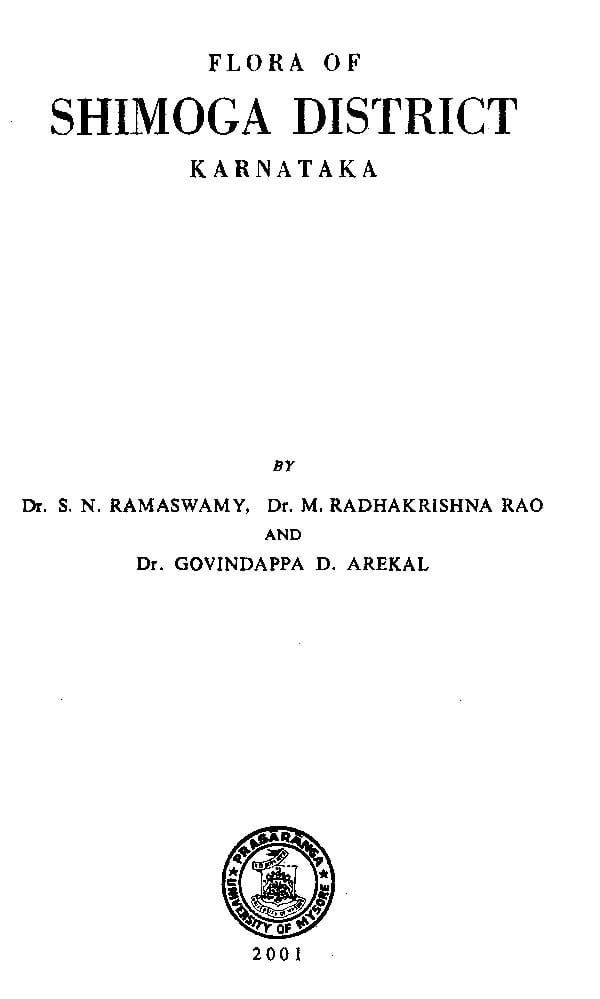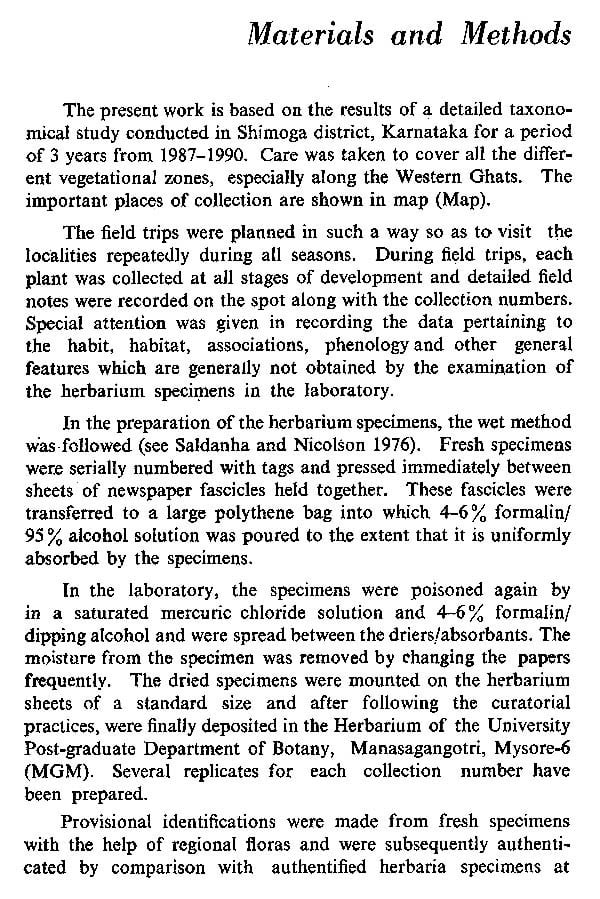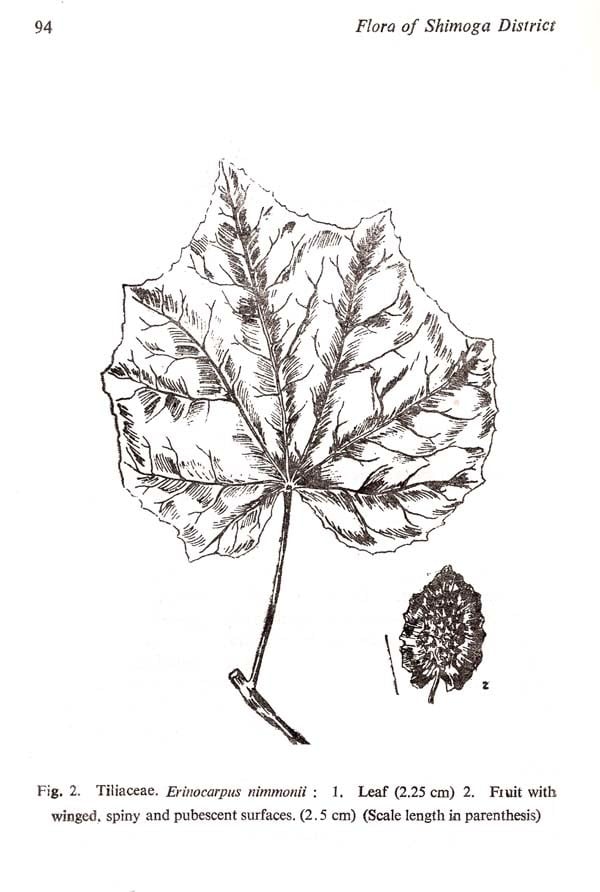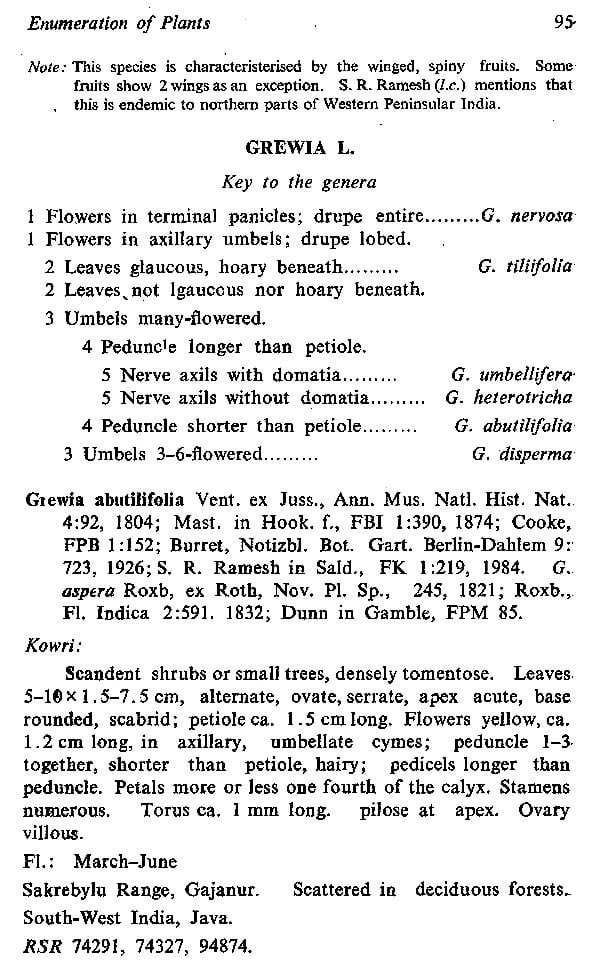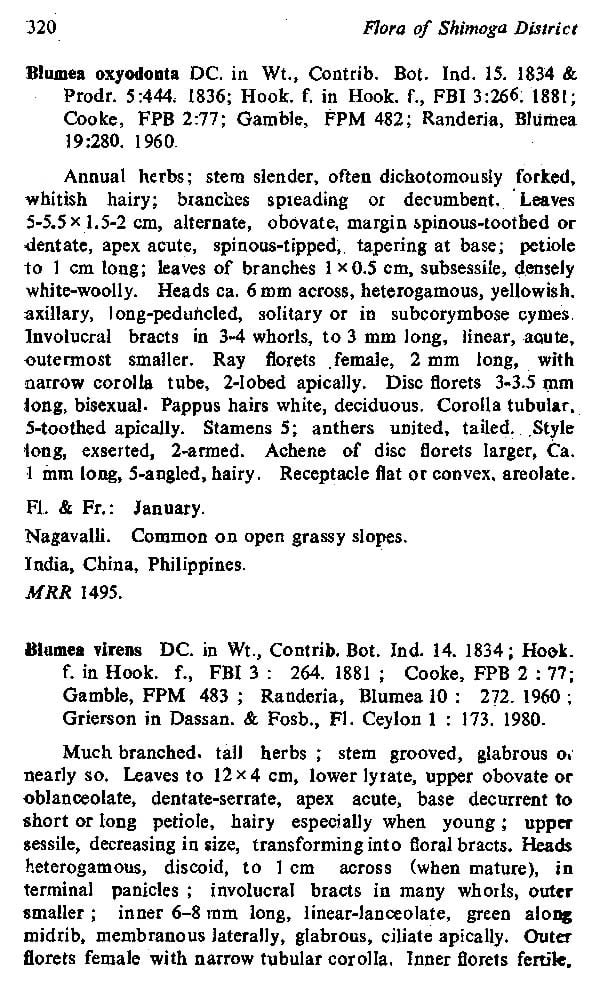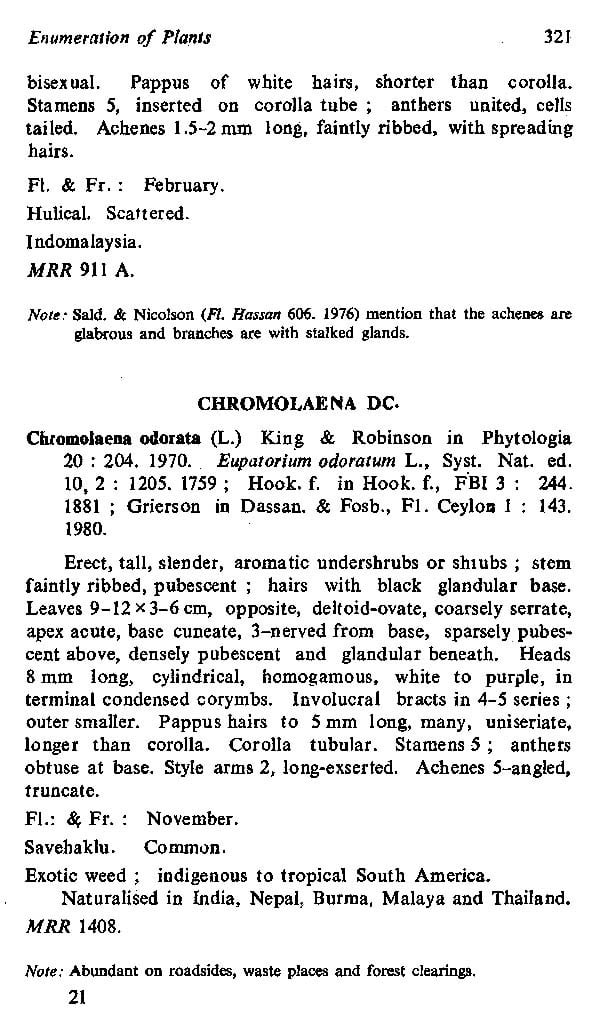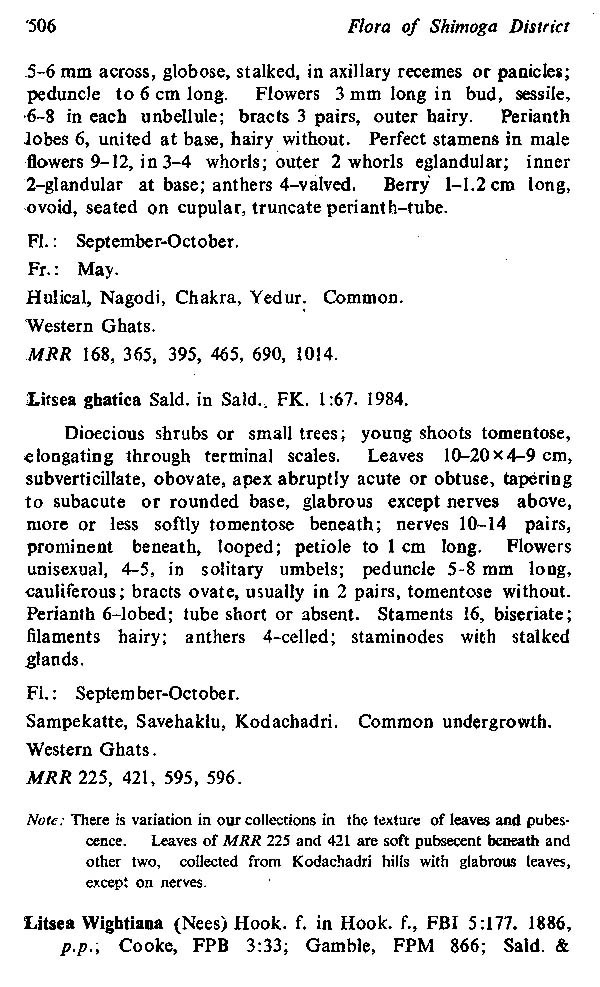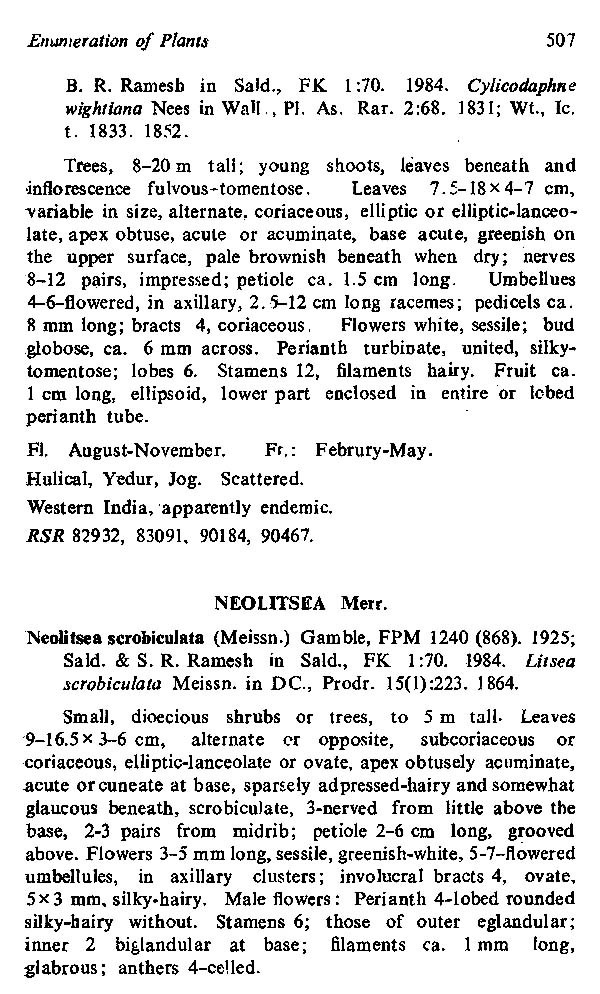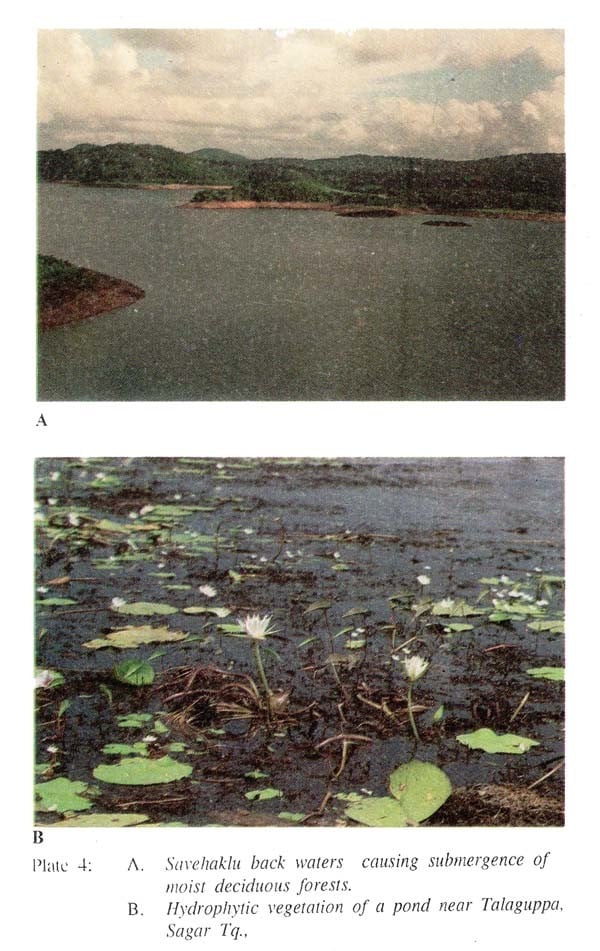About the Book Karnataka, with its widely different climatic and topographical zones, has been the favourite hunting ground for plant lovers and collectors. The flora is varied and this has been effectively highlighted in some of the floras recently brought out for the several districts, particularly by the botanists working at the Department of Botany of the University of Mysore. The present book by Dr. Ramaswamy, Dr. Radhakrishna Rao and Dr. Govindappa is a most useful contribution in this series as it deals with one of the most floristically rich areas of the State, the district of Shimoga. The authors have rich experience in the field of herbarium and in the class room and are best qualified to undertake this task. They have described 850 species belonging to 539 genera and 131 families of angiosperms with up to date nomenclature and adequate descriptions of the taxa included in the book. Phenological observations and accurate recording of flowering and fruiting periods and seasonal changes in plants form a special feature of the present publication. Useful Keys to the families, genera and species are provided which enable the user to identify correctly a species.
This Flora will be most useful for students, foresters, agricultural scientists and in general to all nature lovers who are concerned with the preservation and proper utilization of the plant wealth of our country..
About the Author Dr. S.N. Ramaswamy has been working in the University of Mysore for over 3 decades. He has worked in the University of Regina and University of Winnipeg, Canada and has visited Herbaria and the research institutions in USA and UK. He is the author of several books on Botany and has been the Golden Jubilee research awardee of the University of Mysore. He has published several papers in national and International journals on Morphology of Angiosperms, Taxonomy and Ecology. He has guided many Ph.D. students. Currently he is actively engaged in a research project funded by the Ministry of Environment and Forests, Government of India on the reproductive biology of palms.
Born in the year 1943 Dr. M. Radha Krishna Rao hails from an enlightened family. He obtained his B.Sc. degree from MGM College, Udupi and M.Sc. from Bombay University with Mycology and Plant pathology as a special subject. He obtained his Ph.D. degree in 1990 from the University of Mysore and is currently working as a Reader in Botany in JCBM College, Sringeri. He has published several research papers and is an active taxonomist.
Dr. Govindappa D. Arekal who was a student of Angiosperm Morphology, Taxonomy and Morphogenesis passed away in 1997. He was Professor and Head of the Department of Botany in Mysore and Bangalore Universities. He has guided several Ph.D. students and has to his credit a large number of research publications.
Foreword Kamataka, with its widely different climatic and topographi cal zones, has been the favourite hunting ground for plant lovers and collectors. The flora is varied and this has been effectively highlighted in some of the floras recently brought out for the several districts, particularly by the botanists working at the Department of Botany of the University of Mysore. The present book by Dr. Ramaswamy, Dr. Radhakrishna Rao and Dr. Govindappa is a most useful contribution in this series as it deals with one of the most floristically rich areas of the State, the District of Shimoga. The authors have rich experience in the field in the Herbarium and in the class room and are best qualified to undertake this task. They have described 850 species belonging to 539 genera and 131 families of Angiosperms with up to date nomenclature and adequate descriptions of the taxa included in the book. Four new records have been noted in the District which are also new records for the State. Several species not recorded in the neighbouring districts by recent workers have been recorded and described from Shimoga District. Phenological observations and accurate recording of flowering and fruiting periods and seasonal changes in plants form a special feature of the present publication. Useful Keys to the families, genera and species are provided which enable the user to identify correctly a species. Localities of collection with the field numbers of the collector and useful taxonomic notes are given for the species.
Preface It was the opinion of late Prof. B. A. Razi that "the preparation of another district Flora needs no justification than that it is simply needed ". We still do not have good Floras for various districts of our country based on intensive taxonomical studies. The present work on the Flora of Shimoga district is an attempt to give a bird's eye view of the Flora of the district. Over a period of three years, plant collection and study trips were organized in different seasons by Car, jeep, bus and on foot to different localities in the district including the inaccessible areas of the forests of Western Ghats. Plant collection trips have not been undertaken after the reorganization of Districts in Karnataka in 1999. However studies were not extended to Agumbe and Tirthahalli areas, as Dr. Raghavan, B.S.I. has worked on Agumbe & Tirthahalli areas. The flora of Honnali and Channagiri talluks forms the subject matter of a different district.
Introduction The role of plants in sustaining life on the planet earth is increasingly recognized to-day than ever before. Further, plants provide the basic human needs such as food, clothing and shelter. They also play a significant role in the economy of developing countries, providing raw materials for a variety of industries. As a consequence, vegetational and floristic studies have gained increasing importance and relevance in recent years. As such, there is a need for a thorough up-to-date inventory and assessment of the natural resources of our country as a whole. There is a dire need these days for balanced utilization of natural resources as our forests have been under intense pressure of over exploitation, environmental pollution and other indiscriminate human activities. This has resulted in the depletion of natural habitats leading to the extinction of rare plant species. The tropical forests are vanishing much faster than previously visualised (Constance 1980, Christopher 1980). In this context, intensive exploration of smaller areas for obtaining an inventory of the floristic elements present and identification of the potential sources of their economic importance have become imperative.
In India, plant exploration work began in the 16th century and there was a good progress during the 19th century. In the last quarter of the 19th century and the early decades of the 20th century came the publications of important floristic works (Hooker 1872-1897; Cooke 1901-1908; Gamble 1915-1936). These monumental works are considered to be more extensive rather than intensive. The information on the distribution, physiognomy, phonology and the degree of abundance which is very essential for ecological studies and for the proper utilization of plant resources, is inadequate.
**Contents and Sample Pages**
